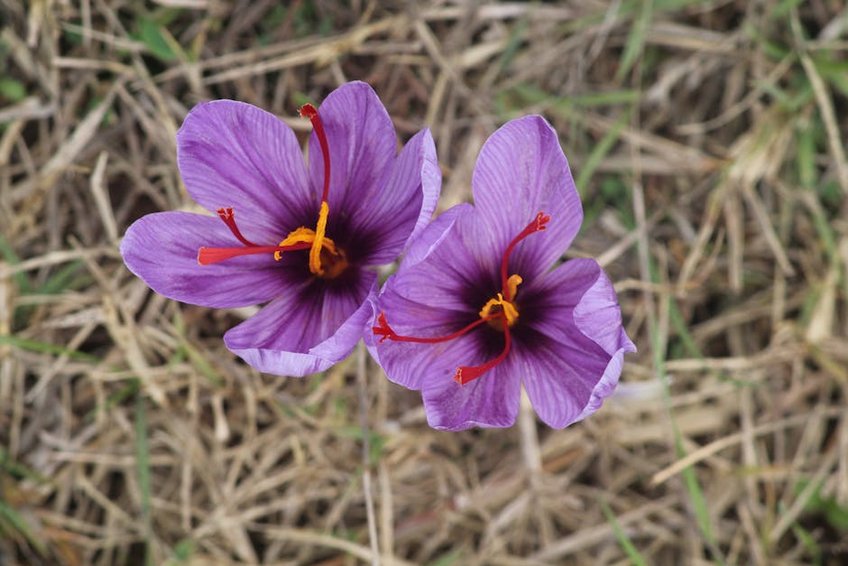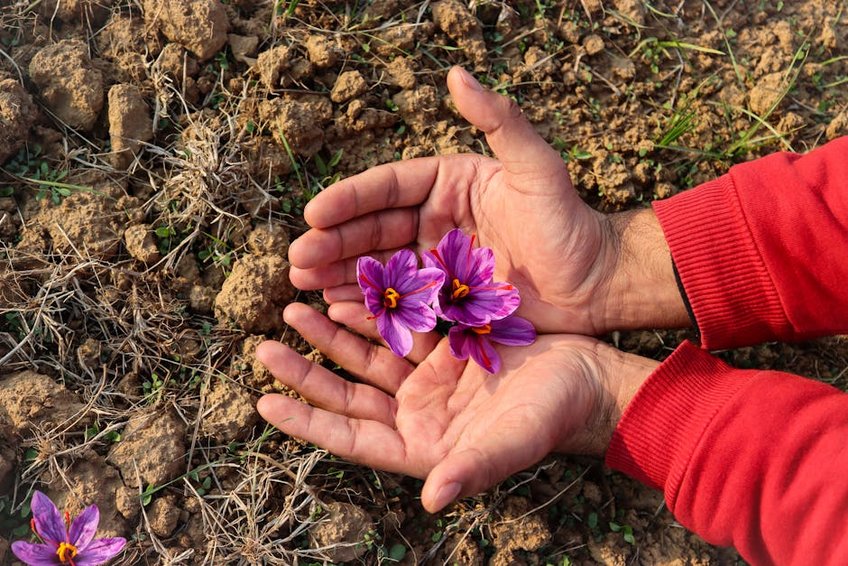Mardin Saffron Harvest Experience: Unveiling Turkey’s Golden Spice Tradition
Embarking on a Mardin saffron harvest experience immerses you in ancient Anatolian farming traditions where families hand-pick crimson stigmas during crisp autumn mornings. This cultural journey reveals why Turkish saffron commands premium prices globally while offering intimate access to harvest rituals unchanged for centuries across southeastern Turkey’s stone-terraced hillsides. Your adventure blends agricultural discovery with Mardin’s rich Assyrian and Kurdish heritage through guided farm visits and spice market explorations.
Essential Saffron Harvest Information
Saffron cultivation arrived in Anatolia via Silk Road traders over 2,000 years ago, with Mardin’s unique microclimate producing particularly potent crocus sativus flowers. The region’s calcareous soil and dramatic temperature swings between day and night intensify the spice’s signature aroma and golden-yellow coloring properties. Local families guard harvesting techniques passed through generations, making this among Turkey’s most protected agricultural traditions.
Each saffron flower contains just three valuable stigmas requiring delicate manual extraction before midday heat diminishes their quality. Harvesters work methodically through purple-blanketed fields from first light, collecting blossoms in woven baskets while singing traditional folk songs. This labor-intensive process explains why genuine saffron remains the world’s most expensive spice by weight.
Saffron’s Cultural Significance
Beyond culinary uses, saffron features prominently in local medicine and religious ceremonies throughout Mardin’s diverse communities.
- Kurdish households use saffron threads in traditional henna ceremonies symbolizing prosperity and happiness for brides.
- Assyrian Christians incorporate the spice into Easter bread recipes and church incense blends during important religious festivals.
- Local apothecaries prepare saffron-infused oils for treating digestive issues and creating perfumes sold in Mardin’s ancient covered bazaar.
- Budget travelers spend $55-75 daily using hostels, public transport, and self-guided exploration with farm visits costing $15-25 per person including saffron sampling.
- Mid-range visitors allocate $100-140 daily for boutique hotels, private guides, and organized harvest experiences with meals at local restaurants featuring saffron dishes.
- Luxury experiences run $200-300 daily covering heritage mansion stays, private driver, and exclusive farm access with hands-on harvesting and cooking classes with master chefs.
- Turkish Ministry of Culture and Tourism
- Mardin Provincial Government
Harvesting Techniques and Timing
The six-week harvest window typically spans October through November, precisely when morning temperatures hover between 46-57°F (8-14°C). Farmers monitor flower development daily since blossoms must be harvested within hours of opening to preserve maximum flavor potency. Experienced pickers can gather approximately 2,000 flowers per hour yet yield less than one ounce of dried saffron from this quantity.
Processing begins immediately after collection with workers carefully separating crimson stigmas from purple petals across long tables in shaded courtyards. The fragile threads undergo slow drying over charcoal fires or in specialized dehydrators before being graded for quality and packaged for market. This meticulous attention to detail ensures Mardin’s saffron maintains its protected geographical indication status.
Economic Impact and Sustainability
Saffron cultivation provides crucial income for approximately 300 family farms throughout Mardin Province, particularly in villages surrounding the historic city center. Sustainable farming practices include crop rotation with legumes and natural pest control methods that preserve soil health across generations. Most operations remain small-scale with annual production rarely exceeding 20 kilograms collectively.

Alt: “mardin-saffron-fields-autumn-harvest-traditional-farming”
Planning Your Mardin Saffron Harvest Experience
Organizing your Mardin saffron harvest experience requires strategic timing between early October and mid-November when fields reach peak flowering. Base yourself in Mardin’s old town for easy access to both farming villages and cultural sites while budgeting $45-80 nightly for characterful stone houses. Reserve guided farm visits through reputable operators like Mardin Tourism Association two months ahead since daily participant numbers remain limited.
Schedule harvest activities for morning hours when fields bustle with activity and temperatures remain comfortable for photography. Afternoons work better for exploring Mardin’s labyrinthine streets and visiting spice shops where you can purchase freshly packaged saffron. Combine your visit with the annual Saffron Festival typically held during the last weekend of October featuring cooking demonstrations and traditional music.
Best Time to Visit Mardin for Saffron Harvest
Peak harvest conditions occur between October 15th and November 10th when approximately 70% of flowers open under ideal 50-64°F (10-18°C) daytime temperatures. Early October offers fewer crowds with 30-40% flowering rates while late November risks missing prime harvesting as flowers diminish. Shoulder season visits in September provide cultural immersion without harvest activities but lower accommodation prices around $35-60 nightly.
November mornings often begin at 41°F (5°C) warming to 59°F (15°C) by midday with minimal rainfall interfering with harvest operations. The saffron festival typically falls on October 28th-30th, drawing larger crowds but offering unique cultural events and expanded market stalls. Book flights and accommodations by August for best availability and pricing during this popular period.
Budget Planning and Costs
Budget categories vary significantly based on accommodation style and tour inclusions.
Essential Preparation Checklist
Pack layered clothing including thermal base layers for chilly 6 AM harvest starts and removable outer layers for warmer afternoons. Bring comfortable waterproof footwear for muddy field conditions and a quality camera with macro lens for capturing intricate flower details. Include a small backpack for carrying water, snacks, and purchased saffron from local farms.
Ensure your passport has six months validity and check Turkey’s e-Visa requirements for your nationality with fees approximately $20-50 for most Western travelers. Purchase comprehensive travel insurance covering agricultural activities and inform providers about any pollen allergies. Download offline maps and translation apps since English remains limited in rural farming communities.
Top Cultural Attractions and Activities
Beyond saffron fields, Mardin’s ancient architecture showcases influences from Mesopotamian, Ottoman, and Arab civilizations across its honey-colored stone buildings. The city’s iconic postcard view from the castle ruins encompasses the entire Mesopotamian plains with terraced houses cascading down the mountainside. Spend at least two full days exploring historical sites and participating in hands-on cultural workshops available through local tourism initiatives.
Early mornings perfect for photography as golden light illuminates stone facades while late afternoons ideal for cafe visits on historic Zinciriye Medresesi terrace. The old city’s narrow streets reveal hidden courtyards, ancient churches, and family-run workshops producing traditional copperware and soap. Balance harvest activities with cultural exploration to fully appreciate Mardin’s unique position bridging Turkish and Syrian cultures.
Must-See Historical Highlights
Mardin Museum occupies a former patriarchal church displaying Assyrian artifacts and ethnographic exhibits explaining regional farming traditions including saffron cultivation. Allow 90 minutes for thorough exploration with entry costing approximately $3 per person and guided tours available for $10-15. The museum’s courtyard features medicinal herb gardens including saffron crocuses during flowering season.
Deyrulzafaran Monastery dates to the 5th century AD, functioning as the Syriac Orthodox Patriarchal seat for centuries amidst dramatic hilltop settings. Visit between 9 AM-12 PM or 1-5 PM daily with $5 admission supporting monastic community projects. Their gift shop sells monk-produced saffron honey and other local products unavailable elsewhere.
Hidden Gems and Local Favorites
Kasimiye Medresesi’s rooftop provides unparalleled sunset views over the plains with fewer crowds than more famous viewpoints. Local families operate small tea gardens nearby where you can sample saffron-infused teas while watching the city transition from day to night. Arrive one hour before sunset for optimal lighting and photography conditions.
Explore the authentic Reyhaniye neighborhood where generations-old spice shops display saffron alongside other regional specialties like sumac and dried eggplant. Shop owners often demonstrate traditional measuring techniques using brass scales and share stories about their family’s involvement in the spice trade. Purchase saffron directly here for better prices and authenticity guarantees.
Hands-On Saffron Workshops
Several family farms offer half-day workshops demonstrating the complete saffron process from flower picking to packaging. Participants learn proper stigma extraction techniques and participate in quality grading sessions using traditional methods. These experiences typically cost $25-40 per person including lunch featuring saffron-rice dishes and take-home souvenir packets.
Advanced booking remains essential through local tourism offices or reputable guides since workshops accommodate only 6-8 participants daily. Morning sessions focus on harvesting while afternoons cover drying and culinary applications. Most operators provide transportation from Mardin city center and all necessary equipment for hands-on activities.
Practical Travel Information and Logistics
Mardin’s compact old city allows easy exploration on foot though steep streets and staircases require moderate physical fitness. Taxis remain inexpensive for longer distances with typical fares between $3-8 across the city center and surrounding villages. Consider hiring a private driver for $40-60 daily when visiting multiple farm locations beyond walking distance.
Accommodation ranges from basic guesthouses to restored mansions with traditional architecture featuring stone vaulted ceilings and courtyard gardens. Book at least three months ahead for October-November visits since quality properties fill quickly during harvest season. Most hotels include breakfast with traditional spreads featuring local cheeses, olives, and saffron-infured pastries.
| Accommodation Type | Features and Locations | Price Range (USD) |
|---|---|---|
| Heritage Mansions | Restored stone houses in old city, courtyard gardens, traditional breakfast | $80-150 nightly |
| Boutique Hotels | Central locations, rooftop terraces, guided tour arrangements | $50-100 nightly |
| Guesthouses | Family-run, homecooked meals, authentic cultural immersion | $25-45 nightly |
| Rural Farm Stays | Saffron farm access, harvesting participation, traditional meals | $35-60 nightly |


